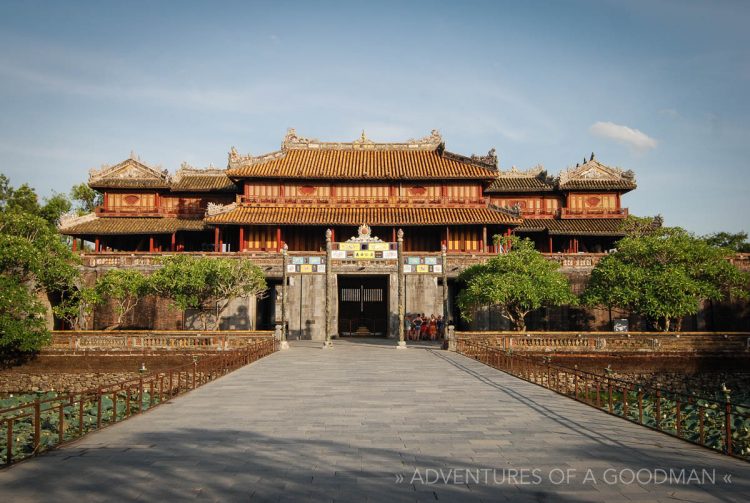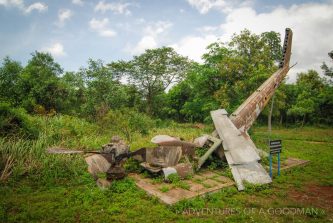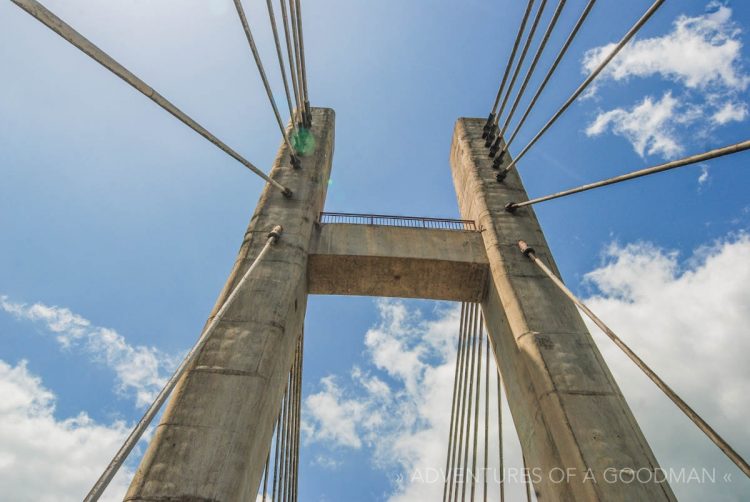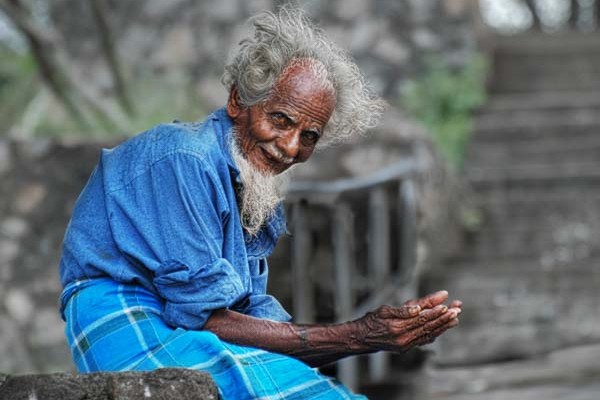Ancient Cities and Demilitarized Zones in Vietnam
During the bus ride to Hue we met Amelia, a fellow American, who we spent much of the next few days with. We arrived in town early, but most of the afternoon was spent trying to book our open ticket out to Hanoi the next day. Everywhere we went we were told that the bus was full and we had to wait another day, but amazingly after telling one woman that we had a flight out of Hanoi and could not wait, three seats opened up.

Exploring Hue, Vietnam
Bus tickets in hand, the three of us next wandered over to The Citadel: an ancient city behind walls in various stages of repair. A tuk tuk driver tried to convince us that it was already closed and we should book his services for a day tour the next day, but surprise surprise, we had no problem getting in. The place itself was beautiful and massive and due to the late hour we pretty much had the whole place to ourselves to wander and take it all in.

Reliving ‘Nam on a DMZ Tour
While we would rather have spent the next day exploring more, we felt it was our duty as Americans to do at least one thing related to the Vietnam War: a tour of the Demilitarized Zone (DMZ). For ten hours we drove around in a minibus, along with lots of other Allied tourists, going to various sites of importance from the war.

However, it is much like going to a Civil War battlefield in the USA: not much to see other than a few memorials and an overgrown plot of grass. In fact, we didn’t even stop at half of the sights on the tour; the van just slowed down for long enough to snap a photo and hope it came out.
To namedrop, the tour visited The Rockpile (just a mountain that used to have a base and heliport atop it), the Dakrong Briidge that seperates the North from the South, the Khe Sanh combat base that held one of the bloodiest and most pointless battles of the war and McNamaras Wall.
We also crossed the 17th Parallel (the dividing line between North and South Vietnam) many times and drove on the Ho Chi Min trail.

Inside the Claustrophobic Vinh Moc Tunnels
The tour highlight was the Vinh Moc tunnels used by the North Vietnamese people to hide from bombings. The tunnels seemed to go on forever, and certain areas had mannequins in them displaying what it would have looked like for Vietnamese to live there.

We had a guide for the Vinh Moc tunnels, but leave it to a group of four Americans and a Dutch guy to ditch the tour and wander alone. For nearly 20 minutes we followed the path of a dark tunnel with only one headlamp and a wind up flashlight to lead the way.
We could see that the walls used to hold lights, but the wiring was all torn out making the whole experience all the more eerie. More than a few times the tunnels got so narrow that we were basically crab walking to not hit our heads and even saw a few places that we would have had to wiggle our way through to pass. We avoided those routes.
I figured that the site would not have any paths for tourists to take that did not lead to an exit, but with more than 30 kilometers of tunnels to get lost in I still got a bit worried. In the end we found an exit and did not have to turn around, but we did miss the rest of the tour. Now, nearly two weeks later, I still have Vinh Moc tunnel dirt on my backpack.

EXPLORE SOMEWHERE NEW
BUY A PRINT
All photos on this site are available as limited edition fine art photographic prints. Please get in touch for sizes and rates.




